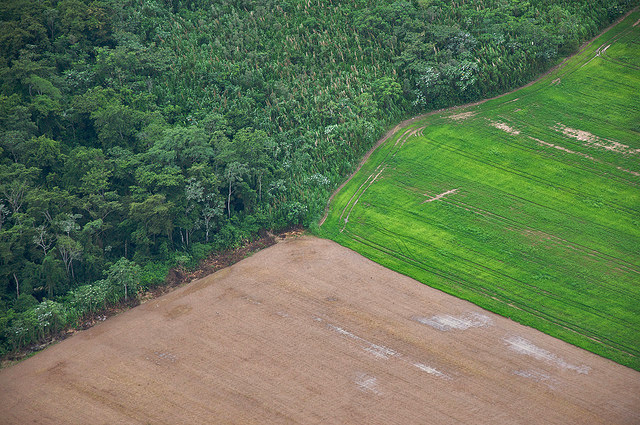
Farming giveth and farming taketh away. Let’s parse that statement: Farming provides food—that much is obvious. But farming also gobbles up land that would otherwise accommodate endless biodiversity and beneficial ecosystem services. To counter the ecological harm done by farms, we have two options. One is to make farming more ecosystem friendly. Known as land sharing, this choice differs from garden variety organic farming by enmeshing cultivation with conservation rather than just minimizing detrimental impacts. The other option, land sparing, intensifies current cultivation while leaving other land as wild as possible. If you’re looking to feed people and maximize biodiversity conservation, you have to pick one.
The correct answer, at least according to a study published today in Science, is land sparing. The study’s authors examined farms and forests in southwest Ghana and northern India. They found more overall diversity of bird and tree species per square kilometer in land sparing setups—where farming is intense and reserves off limits—than in land sharing schemes—where farming and conservation occur on the same plot of land.
The ecologists involved in the study mapped out 25 one square kilometer plots in Ghana and 20 in India. The Ghanaian plots were divided almost equally among forest (8), large-scale oil palm plantations (8), and forest-farm mosaic (9). In India, they were split among five forest and 15 farm plots, five of which were low yield and ten of which were high yield. In each plot, the researchers measured average population densities of bird and tree species and binned each species into two broad categories—those that would thrive under a particular farming regime and those that would suffer. They then compared biodiversity statistics for land sparing regions (which contained both farmed and forested plots) with land sharing ones.
Unsurprisingly, all species fared worse when land was farmed. But the disheartening part—at least for those of us who dream of harmonious, ecotopian farms—was that more species were worse off on a region-wide basis under land sharing than land sparing. So although land shared between farm and forest is better for biodiversity on a single plot scale, the overall region is better off when some plots are intensively farmed and others are left alone.
In other words, sparing appears to be the least worst option. While some generalists thrive under land sharing, less mobile species with higher habitat constraints need special protection. Habitat reserves provide that, and land sparing schemes can support larger reserves. The only way land sharing excels at protecting biodiversity is when farm yields are impossibly low.
Land sharing, then, is the futon of biodiversity conservation. Just as a futon is both a middling bed and mediocre couch, land sharing is merely passable at producing food and so-so at protecting biodiversity. Neither futons nor land sharing systems excel at their dual tasks. As The Dude in The Big Lebowski would say, “This is a bummer, man.”
One drawback of land sparing is that it requires an immense amount of self-control on the part of individuals and society as a whole. Time and again we’ve challenged the inviolability of protected areas when we are—or think we are—short on resources. Conservation is hard, and plowing more land will always be the easier option. To prevent ourselves from doing that, we need to raise yields, which takes resources, training, and discipline. None of this will be easy.
Furthermore, raising yields sustainably, which the authors endorse, is going to be difficult. There are certainly some easy places to start—yields in much of Africa are dishearteningly low. But the world has embraced fossil fuel-driven, industrial agriculture for a reason—it’s the easiest way to squeeze more food from the land. If non-fossil fuel farming were the easiest option, we would have done that by now. Land sharing, on the other hand, trades low yields for closeness to nature. Locally this may be more sustainable, but is there enough land to feed 10 billion people that way? Probably not.
The choice between land sparing and land sharing is just one of many we will face as the planet’s resources stretch thin. While I’m quietly rooting for integrated, ecologically friendly approaches, there seems to be growing evidence that intensively exploiting a limited footprint may be the better option. If that’s true, the Romantic in me hopes we don’t lose our connection with nature in the process.
Source:
Ben Phalan, Malvika Onial, Andrew Balmford, & Rhys E. Green (2011). Reconciling Food Production and Biodiversity Conservation: Land Sharing and Land Sparing Compared Science, 333 (6047), 1289-1291 : 10.1126/science.1208742
Photo by Sam Beebe / Ecotrust.
Related posts: